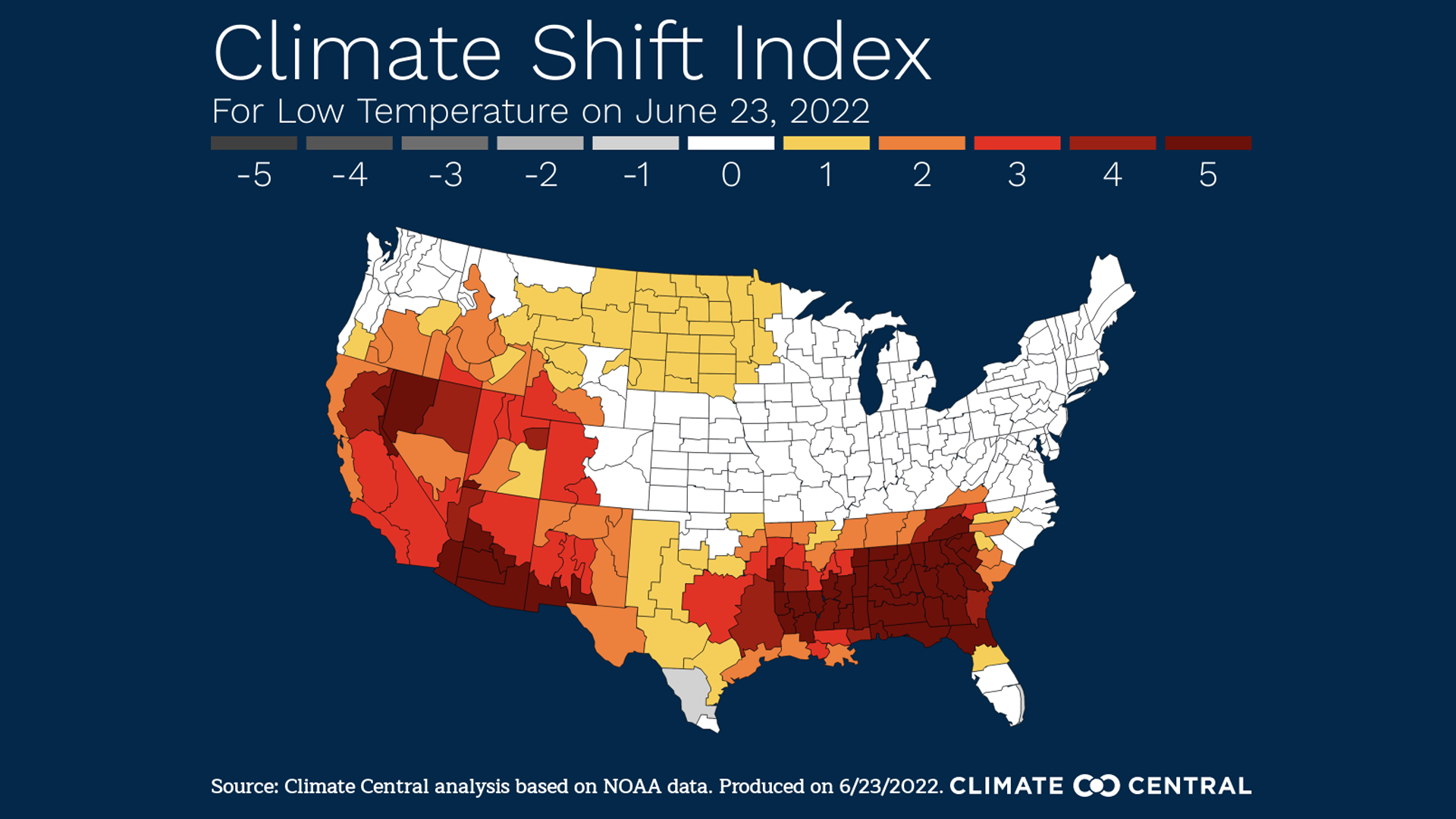Climate scientists are now able to tell whether climate change fuels temperature extremes in real-time, and even ahead of time, using forecast models, historical data and peer-reviewed scientific research.
Why it matters: Presented in a compelling visual format accessible to the lay public and TV meteorologists alike, a new product known as the "Climate Shift Index," or CSI, was unveiled this week by Climate Central, a nonprofit research and journalism organization. The product signals a shift in thinking about the ties between daily weather and long-term climate change.
Driving the news: Climate scientists have made great strides during the past decade in teasing out the role human-caused global warming plays in worsening or setting off extreme weather events, such as heat waves and extreme rainfall.
- These studies, known as extreme event attribution, have taken place after a disaster, and involve sifting through complex historical data and computer model simulations.
- Climate Central's real-time effort is currently limited to just one important parameter: temperature, though the intention is to expand it as science permits.
- Based on methods recently published in a peer-reviewed journal, the organization is using a weather model combined with other sources to place daily high and low temperatures in a climate change context.
- The CSI tool, as designed by Climate Central's researchers along with outside attribution experts, gives a number to indicate the influence of climate change on daily high and low temperatures.
- Specifically, the CSI indicates how frequently certain temperatures now occur in a warming world.

Zoom in: If the CSI level is above zero, human-caused climate change has made a day's temperature more common. A below zero reading would indicate climate change has made that day's temperature more rare compared to a climate without human-caused warming.
- The scale is a categorical one going from minus-5 to positive 5 and is available from the prior day out to three days ahead of time.
- A CSI value of 2 means the day's temperature was made at least twice as likely to occur compared to a world without human-caused global warming, and a CSI level of 5 means local temperatures were at least five times as likely.
- During the testing phase last year, Climate Central found that 99% of the daily high temperatures in the U.S. had a CSI ranging from minus-4 to 4.
How it works: The CSI may seem intuitive, but behind it lies years of slowly advancing work in determining how climate change is stacking the deck in favor of more heat records and fewer cold extremes.
- To compute it, Climate Central uses two methods that it averages together. One utilizes 22 climate models, which are run with and without added greenhouse gases from human activities.
- The researchers also examine observational data going back 30 years to determine the frequency of observed or forecasted temperatures, and this is used to determine how a location's temperatures change in response to shifting global average temperatures.
- The end result is a CSI that incorporates real-world data and simulations of the global climate system.
Yes, but: In the past, scientists tended to be reluctant to attribute individual extreme weather events to climate change, citing uncertainties. However, that is no longer the case for many types of extremes, owing to scientific advances and increasingly obvious climate signals.
- For example, recent studies found the 2021 Pacific Northwest heat wave was "virtually impossible" without the influence of human-caused climate change, and the heat wave in India and Pakistan this spring was made 30 times more likely as well as about 1°C more severe.
What they're saying: "When extreme weather occurs, we talk about climate change — when it hits us in the face. But climate change is affecting weather every day, temperatures most strongly, with consequences we haven’t even started to think about, let alone calculate and prevent," said Friederike Otto, a climate researcher at Imperial College London who co-authored the Climate Central paper underlying the CSI, in a statement.
- Otto co-leads the World Weather Attribution Project, which is a global effort on extreme event attribution.
- "This is a big step forward for operationalized event attribution," Noah Diffenbaugh, a climate scientist at Stanford University who was not involved in the Climate Central effort, told Axios via email.
- Other outside scientists told Axios the new product is both methodologically sound and is likely to be useful for climate change communications.







